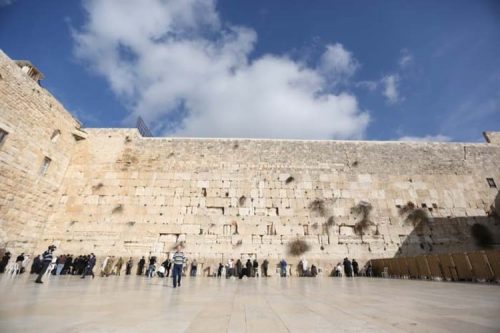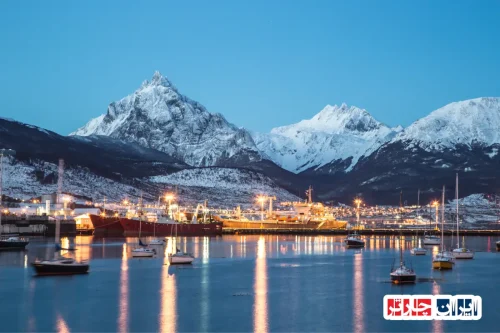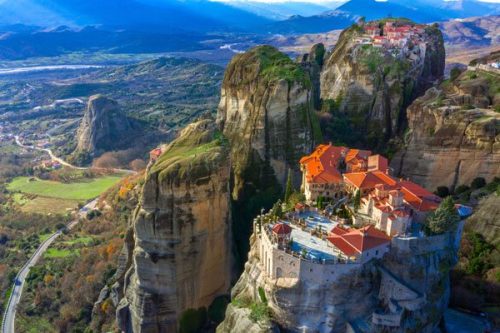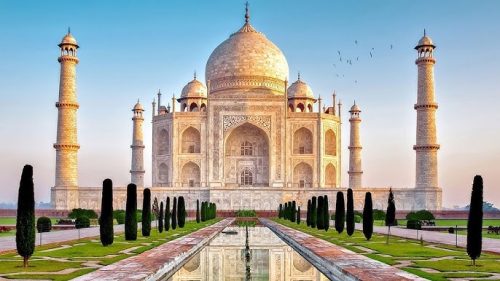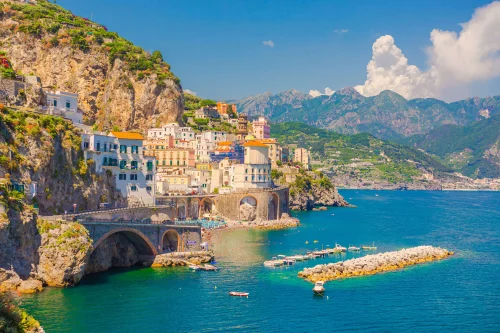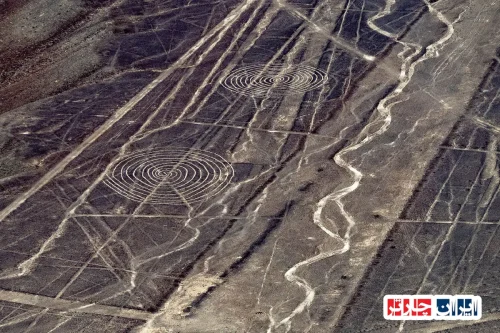Discover the Significance of the Western Wall in Jerusalem, Israel
The Western Wall in Jerusalem, Israel, stands as one of the most sacred and historic landmarks in the city, attracting millions of visitors and pilgrims each year. This ancient structure, also known as the Wailing Wall, is a remnant of the Second Temple and symbolizes the enduring faith and resilience of the Jewish people. Its strategic location within the Old City of Jerusalem makes it a focal point for religious ceremonies, prayers, and cultural heritage. The wall’s impressive construction features massive stones meticulously placed without mortar, showcasing the advanced engineering techniques of ancient times. Visitors often write prayers on small pieces of paper and insert them into the cracks of the wall, a tradition that reflects deep spiritual connection and hope. The Western Wall not only embodies religious significance but also represents a symbol of unity and identity for Jewish communities worldwide. Its historical journey through various eras—from biblical times, through periods of conquest and rebuilding, to modern-day political significance—illustrates its pivotal role in the cultural and spiritual landscape of Jerusalem, Israel. For those seeking a profound spiritual experience or an understanding of Jewish history, the Western Wall offers an unparalleled glimpse into centuries of faith, perseverance, and cultural identity. To learn more about this iconic site and its importance, visit our detailed guide at Western Wall-Iran Charter. Explore the rich history, architecture, religious practices, and ongoing significance of the Western Wall in Jerusalem, Israel, and discover why it remains a symbol of hope and resilience for millions around the world.

The Historical Significance of the Western Wall in Jerusalem
The Western Wall, also known as the Wailing Wall, stands as one of the most iconic and sacred landmarks in Jerusalem, Israel. With a history spanning over two millennia, this ancient structure is a remnant of the Second Temple and holds profound religious and cultural importance for Jewish communities worldwide. Its origins date back to the time of Herod the Great, who expanded the Second Temple complex, making the Western Wall a vital part of Jewish heritage and identity.
Throughout centuries, the Western Wall has symbolized resilience and faith for the Jewish people. Despite numerous conflicts, invasions, and destructions, this sacred site has remained a powerful emblem of hope and continuity. Today, it continues to serve as a focal point for prayer, pilgrimage, and reflection, attracting millions of visitors annually who seek spiritual connection and historical insight into Jerusalem’s rich past.
The significance of the Western Wall extends beyond its physical presence; it embodies the enduring spirit of the Jewish faith and their historical connection to Jerusalem. Its role as a site of prayer and national identity makes it a central element in understanding the religious and political history of the region.
Architectural Features and Construction Techniques of the Western Wall
The Western Wall is renowned for its impressive construction, featuring massive limestone stones meticulously placed without mortar, showcasing advanced engineering techniques of ancient times. The stones, some weighing several tons, were precisely cut and fitted together to withstand the test of time and natural elements, exemplifying the mastery of Herodian architecture.
The wall’s structure reveals multiple construction phases, with stones arranged in horizontal courses and reinforced over centuries through restoration efforts. The lower courses, dating back to Herod’s expansion, display remarkable craftsmanship with large, perfectly squared stones. The absence of mortar highlights the precision and skill involved in its assembly, ensuring stability and durability over thousands of years.
Modern archaeological studies have uncovered the sophisticated engineering behind the Western Wall, emphasizing the advanced techniques used to create a resilient and enduring monument. Its architecture not only reflects historical construction practices but also symbolizes the ingenuity of ancient builders in creating structures that stand the test of time.
The Religious and Spiritual Role of the Western Wall in Judaism
The Western Wall is considered the holiest accessible site for Jewish prayer, representing a direct link to the divine and the ancient Temple in Jerusalem. For centuries, it has been a place where Jews gather to pray, meditate, and connect spiritually with their heritage. The wall’s significance is rooted in the belief that it is the closest physical point to the Holy of Holies, the most sacred area of the former Temple.
Many pilgrims write prayers on small pieces of paper and insert them into the cracks of the wall, believing that their supplications are carried directly to God. Special religious ceremonies, including Bar and Bat Mitzvahs, are often held here, emphasizing its role as a center of spiritual life and community gathering.
The Western Wall also symbolizes resilience and hope, especially during times of hardship. Its presence inspires faith and perseverance among Jews worldwide, reinforcing their spiritual connection to Jerusalem and their enduring covenant with God.
The Political and Historical Context of the Western Wall in Jerusalem
The Western Wall has been at the heart of Jerusalem’s complex history, witnessing numerous political changes and conflicts. It was part of the Second Temple complex destroyed by the Romans in 70 CE, and since then, it has symbolized Jewish resilience amid adversity. Over centuries, control of the site has shifted through various rulers, including Byzantines, Muslims, Crusaders, Ottomans, and the British.
In modern history, the Western Wall became a focal point of the Israeli-Palestinian conflict, representing both religious significance and national identity. The 20th century saw intense disputes over access and sovereignty, with the site often being a flashpoint for tensions and negotiations. Its status remains a sensitive issue in regional and international diplomacy.
Today, the Western Wall stands as a symbol of Jewish sovereignty and religious freedom, but also as a reminder of the ongoing political struggles over Jerusalem’s future. Its preservation and accessibility continue to be central to peace efforts and cultural identity in the region.
Ceremonies, Rituals, and Traditions at the Western Wall
Every year, millions of visitors participate in religious rituals and ceremonies at the Western Wall. One of the most common practices is writing prayers on small slips of paper and placing them into the cracks of the wall, symbolizing direct communication with God. This act is deeply rooted in tradition and faith, making the wall a living place of spiritual expression.
During significant Jewish holidays such as Yom Kippur and Passover, special prayers and processions take place, emphasizing the wall’s role as a center of communal worship. Visitors often wear traditional attire, and men and women pray separately, following religious customs.
Respectful behavior, modest dress, and quiet reverence are essential when visiting the site. Many pilgrims also observe customs like facing the wall during prayer and refraining from disruptive activities, ensuring the sanctity of the space is maintained for all worshippers.
Contemporary Challenges in Preserving the Western Wall
Maintaining the Western Wall amidst increasing tourism and urban development presents ongoing challenges. Natural wear, pollution, and the impact of large crowds threaten the integrity of this ancient monument. Preservation efforts involve careful restoration, structural reinforcement, and environmental protection measures.
Political tensions and disputes over access rights also complicate conservation initiatives. Balancing religious sensitivities with archaeological preservation requires collaboration among authorities, scholars, and community leaders. Modern technology, such as non-invasive restoration techniques, plays a vital role in safeguarding the site for future generations.
Public awareness and responsible tourism are crucial in ensuring the Western Wall remains a resilient symbol of faith and history. Continuous investment and international cooperation are necessary to address emerging threats and preserve this UNESCO World Heritage site effectively.
Visiting Tips and Etiquette for the Western Wall
When planning a visit to the Western Wall, it’s important to observe proper etiquette to respect its sacred nature. Dress modestly, covering shoulders and knees, and behave quietly and respectfully. Refrain from loud conversations or disruptive behavior to maintain the reverent atmosphere.
Participants should prepare their prayers in advance, write them on small pieces of paper, and insert them into the cracks carefully. During prayer, face the wall and follow local customs, such as covering heads if required. Photography may be restricted in certain areas, so always check for signs or ask permission.
Leaving the site with a respectful attitude and ensuring cleanliness helps preserve the sanctity of the Western Wall. Visitors are encouraged to learn about its history and significance beforehand to enrich their experience and show reverence for this historic monument.
Future Perspectives and Conservation Strategies for the Western Wall
Looking ahead, the preservation of the Western Wall requires ongoing efforts to adapt to environmental and political changes. Developing advanced conservation techniques and strengthening international cooperation are essential for its protection. Creating sustainable tourism practices can help balance public access with preservation needs.
Educational programs aimed at raising awareness about the wall’s historical and religious importance will foster greater appreciation and responsibility among visitors. Additionally, engaging local communities in conservation efforts ensures that the site remains a symbol of cultural heritage and spiritual significance.
Investing in research, infrastructure, and security measures will help address future challenges, ensuring that the Western Wall continues to inspire faith, history, and unity for generations to come. Its preservation is not only a duty but also a testament to the enduring legacy of Jerusalem’s sacred history.

Frequently Asked Questions about the Western Wall in Jerusalem
- What is the historical significance of the Western Wall?
- The Western Wall, also known as the Wailing Wall, is a remnant of the Second Temple in Jerusalem and holds profound religious and cultural importance for Jewish communities worldwide. It symbolizes resilience, faith, and the enduring connection of the Jewish people to Jerusalem, having witnessed over two millennia of history, including destruction and rebirth.
- When was the Western Wall built?
- The Western Wall was constructed during the expansion of the Second Temple by King Herod the Great, around the 1st century BCE. Its massive limestone stones and precise engineering reflect the advanced construction techniques of that era.
- Why is the Western Wall considered the holiest site in Judaism?
- The Western Wall is regarded as the closest accessible site to the Holy of Holies, the most sacred part of the ancient Temple in Jerusalem. It serves as a spiritual connection point for Jews worldwide, symbolizing their enduring faith and hope.
- What are the main architectural features of the Western Wall?
- The wall is composed of large limestone blocks meticulously fitted without mortar, showcasing ancient engineering mastery. The lower courses date back to Herod’s expansion, and the structure has been reinforced over centuries through restoration efforts, reflecting sophisticated construction techniques.
- What role does the Western Wall play in Jewish religious practices?
- The Western Wall is a central place for prayer, meditation, and religious ceremonies. Visitors often insert written prayers into its cracks, and it hosts events like Bar and Bat Mitzvahs, reinforcing its significance as a spiritual and communal hub.
- How has the Western Wall been affected by political history?
- The Wall has witnessed numerous political changes, from the destruction of the Second Temple in 70 CE to control shifts among various rulers. It remains a symbol of resilience amid conflicts and a focal point in regional disputes over Jerusalem’s sovereignty.
- What are common rituals performed at the Western Wall?
- People write prayers on small slips of paper and place them into the cracks. During Jewish holidays, special prayers and processions are held. Visitors follow customs like facing the wall during prayer and dressing modestly to maintain reverence.
- What challenges are faced in preserving the Western Wall?
- Preservation challenges include natural wear, pollution, and the impact of large crowds. Efforts involve careful restoration, structural reinforcement, and environmental protection, often balancing religious sensitivities with archaeological conservation.
- How should visitors behave when visiting the Western Wall?
- Visitors should dress modestly, behave respectfully, and avoid loud conversations. Preparing prayers in advance, facing the wall during prayer, and refraining from disruptive activities help maintain the site’s sanctity.
- What are future strategies for the conservation of the Western Wall?
- Future efforts include advanced restoration techniques, international cooperation, sustainable tourism practices, and educational programs to raise awareness. Engaging local communities ensures the preservation of its cultural and spiritual significance.
- Can anyone visit the Western Wall?
- Yes, the Western Wall is open to visitors of all backgrounds. However, visitors should respect religious customs, dress modestly, and follow guidelines to honor the site’s sanctity.
- Are there specific times to visit the Western Wall?
- The site is accessible year-round, with special significance during Jewish holidays like Yom Kippur and Passover. Early mornings and late evenings are often quieter, providing a more contemplative experience.
- Is photography allowed at the Western Wall?
- Photography is generally permitted, but restrictions may apply in certain areas or during religious ceremonies. Always look for signs or ask for permission to ensure respectful behavior.
- What is the significance of writing prayers on paper?
- Writing prayers on small slips of paper and placing them into the cracks is a tradition believed to send supplications directly to God. It symbolizes personal connection and faith.
- How does the Western Wall symbolize resilience?
- Despite centuries of destruction, invasions, and political upheavals, the Western Wall has remained a symbol of hope, faith, and perseverance for the Jewish people and the world.










